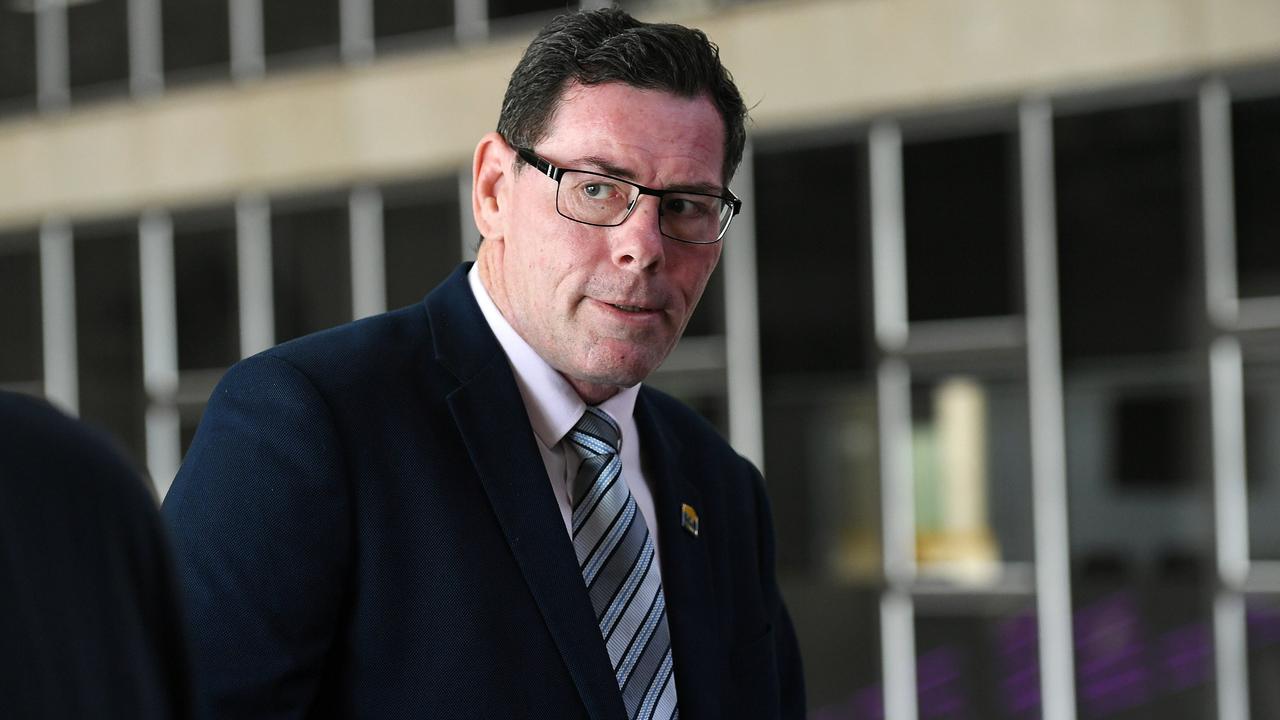‘Lay down lines’: Aircrews drop one million litres on Forsayth fire
Video taken from aircraft over the Forsyth fire gives us some idea how huge the blaze was. Read how two aeroplanes and four helicopters laid “lines” of water to divert the flames.

Townsville
Don't miss out on the headlines from Townsville. Followed categories will be added to My News.
Footage taken by firebombing crews working above the Forsayth fire has captured the enormous scale of the blaze, which has consumed over 64,000 hectares of bushland.
The footage was taken in a firebird helicopter acting as an “observer platform”, mapping the fire’s spread and alerting those on the ground.
At its peak, six different aircraft were circling the fire, tracking its progress and laying “lines” of water and fire retardant to direct the flames around buildings and into natural dead-ends.
The main workhorses were two fixed wing amphibious bombers with “belly tanks” of water, a Bell 210 helicopter, and a Blackhawk.
Accompanying the larger aircraft were two “firebirds” – smaller helicopters used for air attack and observations.

Queensland Fire Department (QFD) aircraft officer Ben Turnbull helped co-ordinate the aircrews from the emergency regional headquarters on Webb Dr, in Townsville.
“At this point (November 15) the fire is mainly contained,” Mr Turnbull said.
“It was a fantastic fire fighting effort, not only did the air attack help slow the fire edge down, but we provided maps throughout the day to QDF, local authorities and landowners to assist them with the fire. That info was vital because this fire was so vast.”

A lot of people might assume planes and water bombers are hitting the centre of the fire with all the water they can carry, but Mr Turnbull said the reality of their work was quite different.
“Aircraft don’t put the fire out. You could send as many aircraft as you want over a fire they won’t be able to put it out,” he said.
“The goal of our aircrews is to slow the fire down and lay lines to direct the fire around structures.”

Laying a line involves putting down water or fire suppressant in front of the fire’s path.
QFD estimates their aircrews put in 133 flying hours over the fire, and did 586 drops that added up to 1.2 million litres.
Having eyes in the sky became especially critical during the Forsayth fire towards the end of the battle when a finger of fire came off the southwest corner and started heading towards Forsayth township.

“We saw that and informed the crews on the ground, and that really helped the community put in place plans to protect the town,” Mr Turnbull said.
That last finger of fire was fought so efficiently by ground crews that it burned out well before it reached the last line of defence.
Mr Turnbull said strategies used during the Forsayth fire included back burning off natural features like creek lines and machine tracks, cutting tracks with dozers and deploying ground crews straight to the fire to hit the flames with hose reels and foam.
More Coverage
Originally published as ‘Lay down lines’: Aircrews drop one million litres on Forsayth fire





